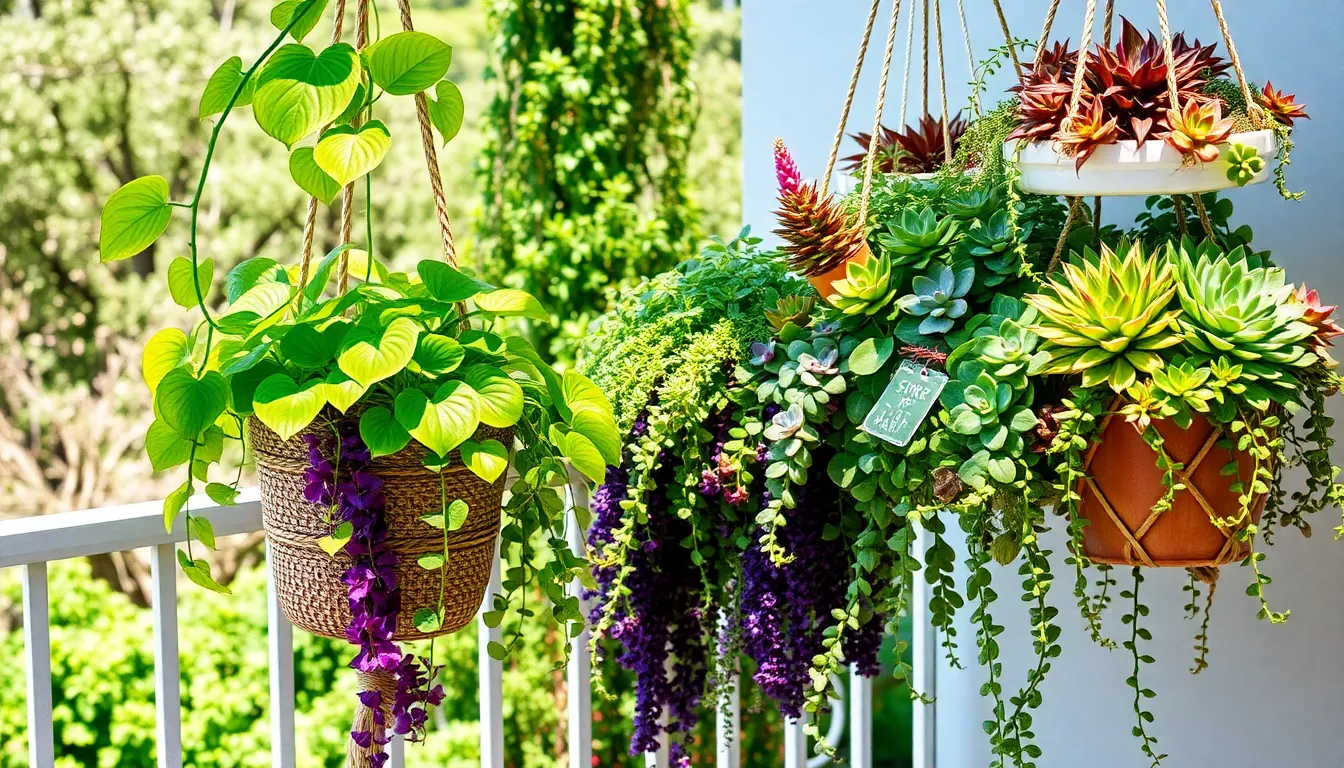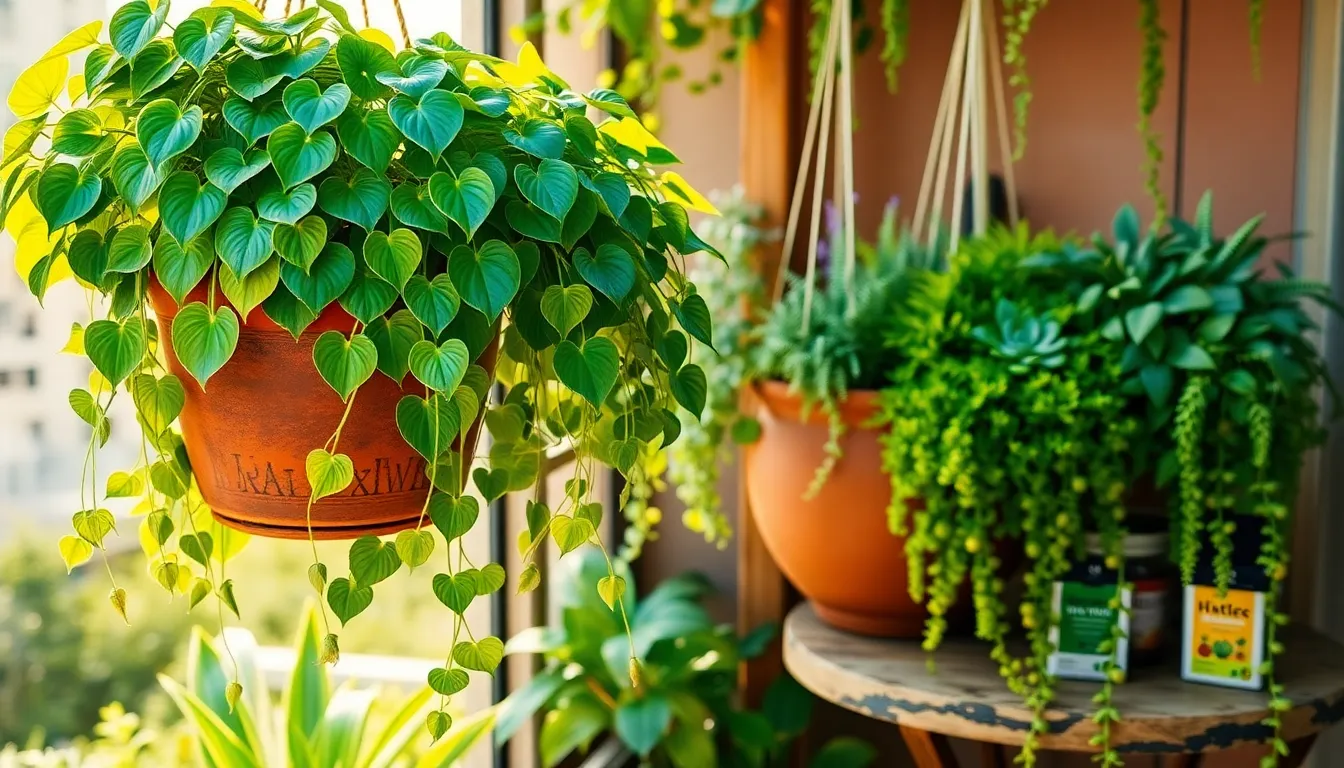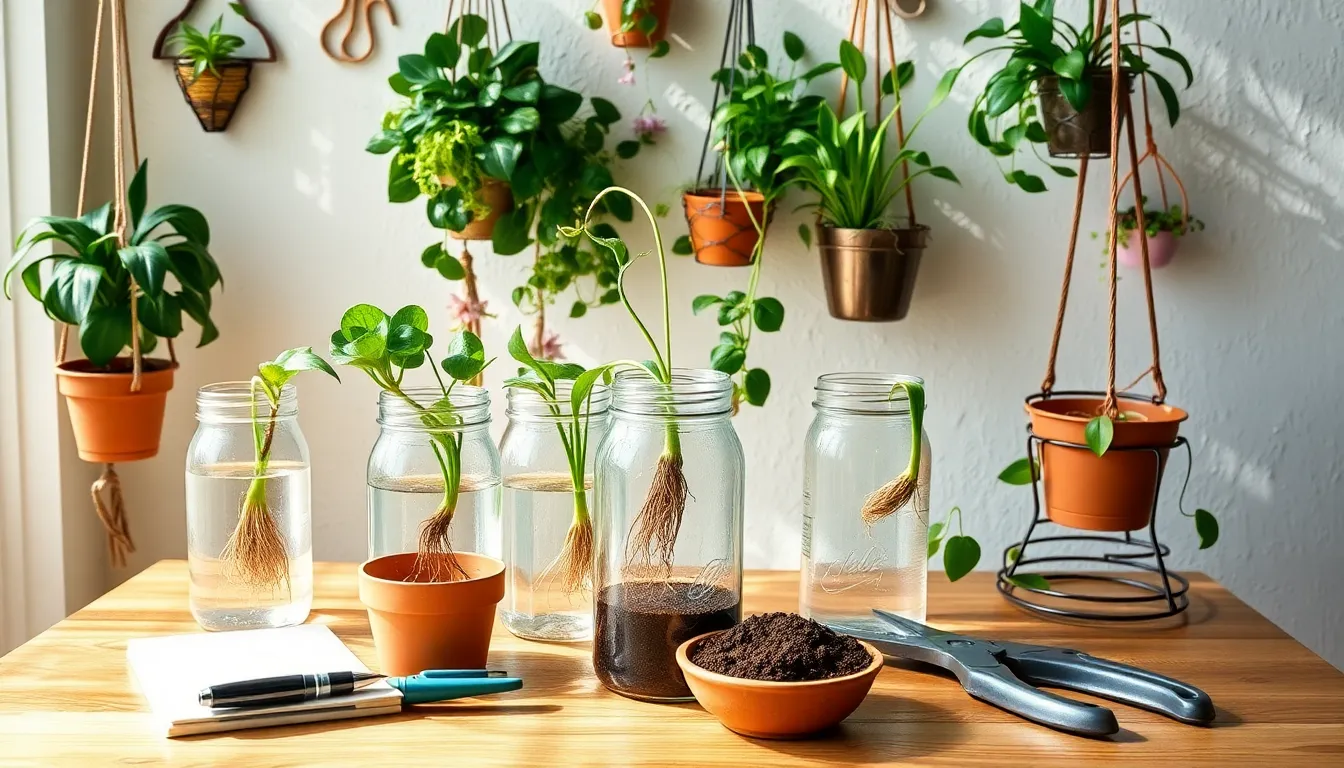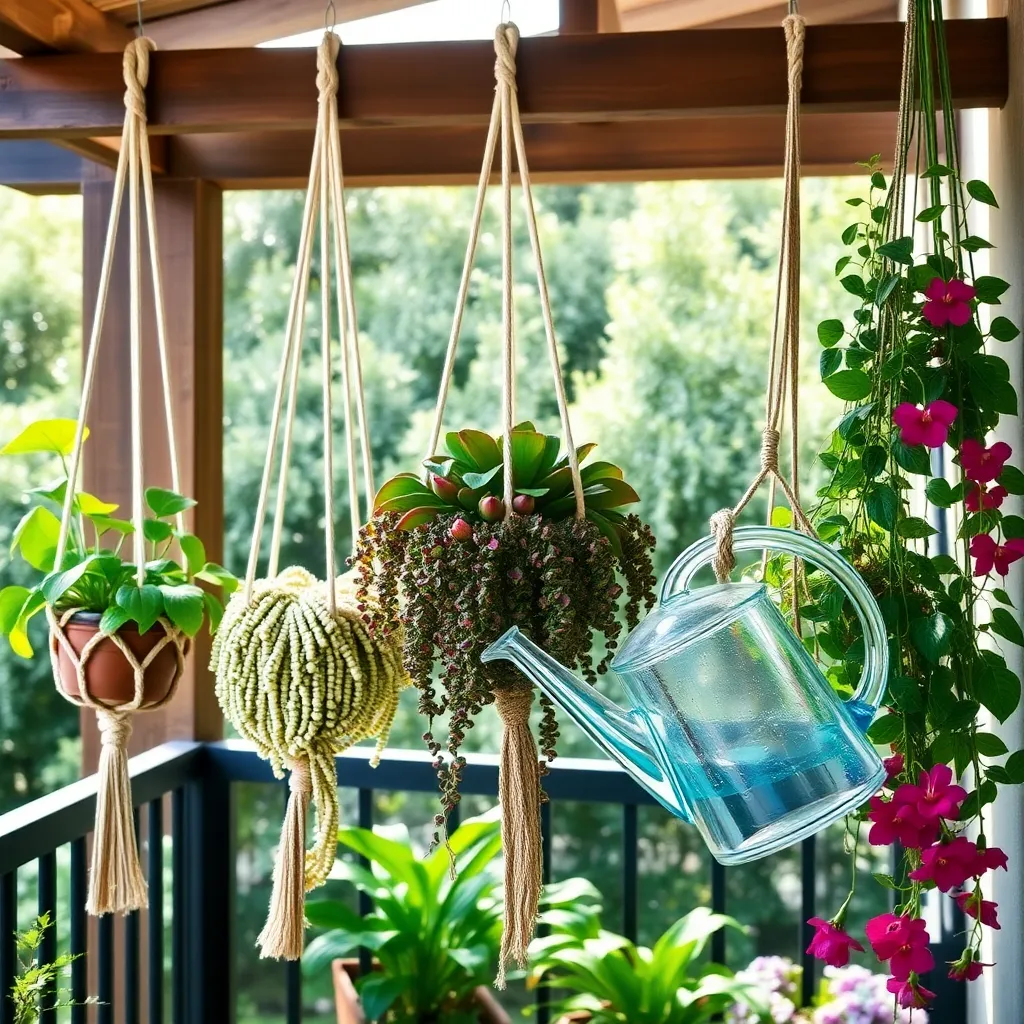There’s something undeniably magical about a hanging plant swaying gently in the breeze, adding a touch of green elegance to any space. Whether you’re a seasoned gardener with a flourishing collection or a newcomer eager to explore the world of indoor plants, the art of maintaining these suspended beauties can transform your gardening experience.
Hanging plants can bring life to even the smallest of spaces, yet their unique positioning often demands a special kind of care. In this article, we will guide you through a comprehensive maintenance checklist, ensuring your hanging greenery thrives with vitality and charm.
You’ll discover practical tips on watering, feeding, and pruning, tailored to meet the needs of both common and exotic varieties. By the end, you’ll feel equipped with the knowledge and confidence to nurture your hanging plants, making them a vibrant focal point in your home or garden.
Choosing Ideal Hanging Plant Varieties
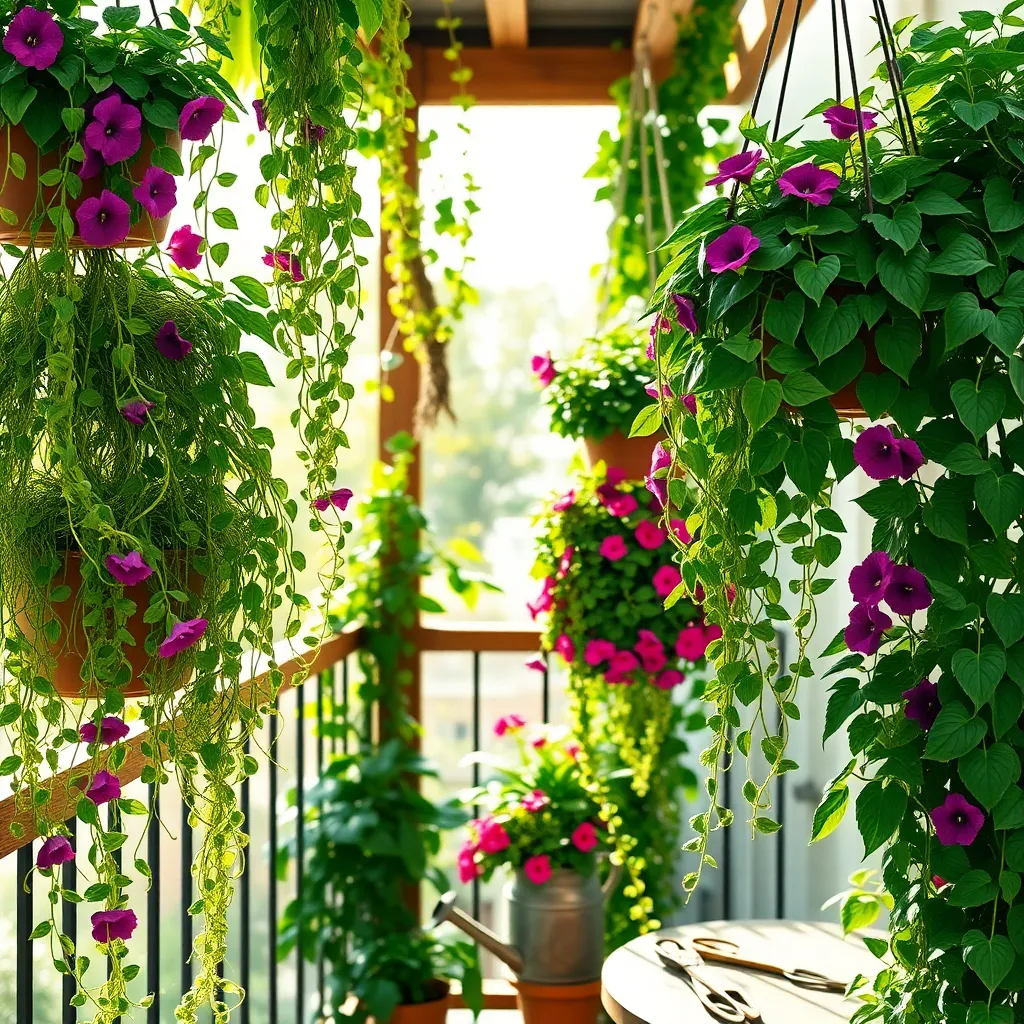
When selecting hanging plant varieties, consider the amount of light your space receives. Plants like ferns and spider plants thrive in low to medium light conditions, while succulents and geraniums prefer direct sunlight.
It’s important to choose plants that suit your watering habits. If you tend to forget watering, opt for drought-resistant varieties like succulents or pothos, which can tolerate less frequent irrigation.
For those who enjoy a more hands-on approach, consider seasonal flowering plants like petunias or fuchsias. These require regular deadheading and more frequent feeding, offering a rewarding experience as you nurture their blooms.
Using the right soil is crucial for successful hanging plants. A lightweight potting mix with good drainage is essential, especially for varieties like begonias and lobelia that dislike waterlogged roots.
Advanced gardeners might experiment with mixing different plant varieties in the same basket for visual interest. Combine plants with complementary growth habits, such as trailing ivy and upright coleus, to create a dynamic display.
Lastly, consider the weight of the plants and containers, especially if you’re hanging them from ceilings or walls. Choose lightweight plastic or fiber containers and avoid overwatering to prevent excessive weight that could damage your mounting structure.
Assessing Sunlight and Shade Needs
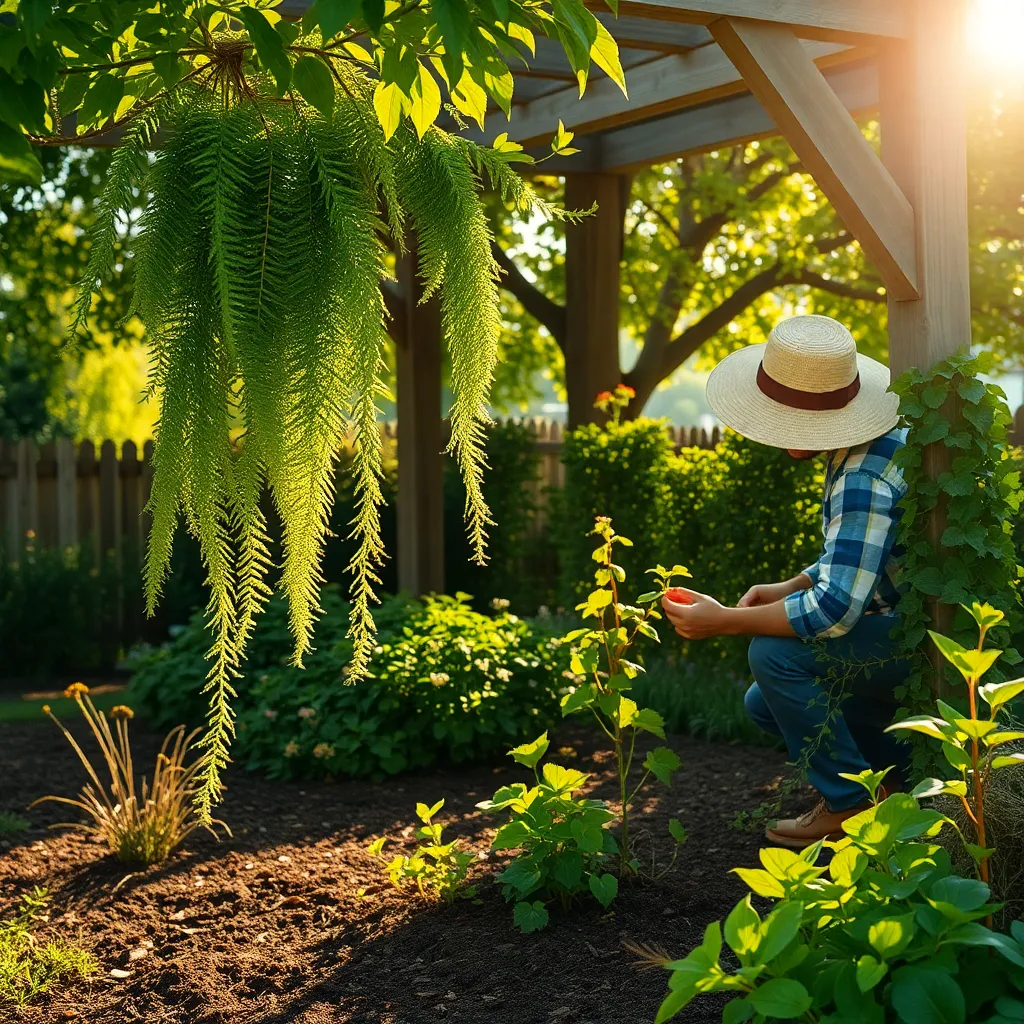
Understanding the sunlight and shade needs of your hanging plants is crucial for their health and vitality. Begin by observing the natural light patterns in the area where you plan to hang your plants, noting which spots receive full sun and which are shaded.
Most hanging plants require at least a few hours of direct sunlight daily, but some thrive in partial or full shade. Match the plant to the light conditions by selecting varieties suited to the available light, such as ferns for shaded areas or succulents for sunny spots.
Utilize a light meter or a simple smartphone app to measure the light intensity if you’re unsure about the lighting conditions. This will help you understand whether your location receives full sun, partial sun, or shade, allowing you to choose the right plants accordingly.
For beginners, consider starting with adaptable species like pothos or spider plants, which tolerate a wide range of light conditions. More advanced gardeners can experiment with light-loving plants like petunias or lobelia, which require more specific sun exposure for optimal flowering.
Optimal Watering Practices for Hanging Plants

Proper watering is crucial for maintaining the health of your hanging plants. Ensure you water your plants thoroughly until you see excess water draining from the bottom of the container, which indicates the soil is fully saturated.
Consider the material of your hanging planter, as it affects the watering frequency. Porous materials like terracotta dry out faster than plastic or glazed ceramics, requiring more frequent watering.
It’s essential to check the soil moisture regularly to avoid overwatering, which can lead to root rot. Insert your finger about an inch into the soil; if it feels dry, it’s time to water your plant.
For advanced care, consider using a moisture meter for more accurate readings, especially if you’re new to plant care. Adjust your watering schedule based on the season and your plant’s specific needs, as they may require more water during active growth periods or hot weather.
Fertilization Tips for Thriving Growth

Proper fertilization is crucial for the lush growth of hanging plants, as they often have limited soil to draw nutrients from. Begin by selecting a balanced, water-soluble fertilizer, which can be easily diluted and applied during watering sessions.
For most hanging plants, fertilizing every two weeks during the growing season is optimal to maintain robust growth. Be cautious, however, to avoid over-fertilizing, which can lead to salt build-up and harm plant roots.
Advanced gardeners might consider using a slow-release fertilizer, which provides a steady supply of nutrients over time. This method is particularly useful for those who travel or have a busy schedule, ensuring plants receive consistent nourishment.
When fertilizing, ensure the soil is moist to help distribute nutrients evenly and prevent root burn. Always follow the manufacturer’s instructions regarding the dilution and application rate to prevent damage to your plants.
Pruning and Pest Control Strategies

Pruning is an essential practice for maintaining healthy hanging plants and promoting lush growth. By removing dead or diseased foliage, you not only improve the plant’s appearance but also enhance air circulation, which can prevent pest infestations.
Before starting, ensure you have the right tools, such as sharp, clean pruning shears, to avoid damaging the plant. For beginners, focus on cutting back overgrown stems and leaves, which can help the plant allocate nutrients more efficiently.
Advanced gardeners can use pruning to shape their hanging plants, encouraging a fuller, more aesthetically pleasing appearance. Regularly inspect your plants, ideally every few weeks, to determine the best times for pruning based on their growth patterns.
Pest control is equally important in maintaining vibrant hanging plants. Start by keeping your plants healthy, as strong plants are less susceptible to pest problems.
Use natural solutions like neem oil or insecticidal soap to manage common pests like aphids and spider mites. For a more hands-on approach, regularly wipe down leaves with a damp cloth to remove pests and prevent their spread.
For advanced pest control, consider introducing beneficial insects such as ladybugs, which can help manage pest populations naturally. Always remember to monitor your hanging plants closely, as early detection of pests can make management much easier and more effective.
Conclusion: Growing Success with These Plants
As we wrap up our exploration of ‘The Ultimate Hanging Plants Maintenance Checklist,’ let’s revisit the five key relationship concepts we uncovered. First, we discussed the importance of consistent communication, just as plants need regular watering. Next, we highlighted the need for balance, akin to ensuring your plant receives the right amount of sunlight. Third, we focused on nurturing growth by pruning negative patterns, much like trimming dead leaves. Fourth, we underscored the value of building a strong foundation, similar to using quality soil. Lastly, we emphasized the importance of ongoing care and attention, paralleling regular check-ins with your partner.
Now, take a moment to reflect on one area of your relationship that could benefit from a little extra care and commit to making a positive change today. Whether it’s setting aside ten minutes for meaningful conversation or planning a special date night, small steps can lead to significant growth.
Save this article as your go-to resource for maintaining a thriving relationship. Bookmark it now, so you can revisit these valuable insights whenever you need a refresher.
Remember, just as a well-maintained plant flourishes, so too can your relationship prosper with dedication and love. Here’s to nurturing connections that grow and bloom beautifully!

